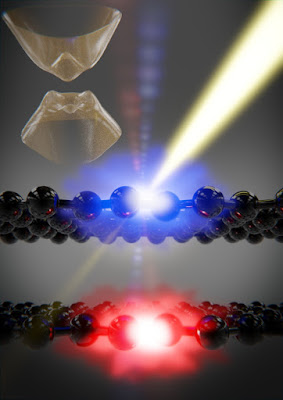Topics: Condensed Matter Physics, Graphene, Particle Physics, Nanotechnology
Researchers in the US have succeeded in observing excitons in bilayer graphene for the first time using photocurrent spectroscopy and modified Fourier transform infrared spectroscopy techniques. The new result could help in the development of next-generation optoelectronics instruments, such as tunable infrared detectors, light-emitting diodes and lasers for molecular spectroscopy, thermal imaging and astronomy applications.
“The excitons we observed can be tuned using an electrical field, have a high quality factor, strongly absorb light and lie in the technologically important mid-infrared to terahertz wavelength range,” explains team member and lead author of the study Long Ju, who is at Cornell University. “No other conventional semiconductor contains such excitons.”
Graphene is a sheet of carbon atoms just one atom thick arranged in a honeycomb lattice. It is a semi-metal and does not contain a bandgap in its pristine state. Bilayer graphene is different, however, in that a large and tunable bandgap can be induced in it using an applied electric field – something that cannot be done for single-layer graphene.
Researchers theorize that bilayer graphene also supports tunable excitons (electron-hole pairs) but these had never been actually observed in an experiment until now.
Excitons seen in bilayer graphene, Belle Dumé, Nanotechweb.org

Comments